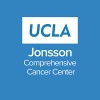
Cladribine, Idarubicin, Cytarabine, and Quizartinib in Treating Patients With Newly Diagnosed, Relapsed,...
Acute Myeloid LeukemiaBlasts 20 Percent or More of Bone Marrow Nucleated Cells6 moreThis phase I/II trial studies the side effects and how well cladribine, idarubicin, cytarabine, and quizartinib work in treating patients with acute myeloid leukemia or high-risk myelodysplastic syndrome that is newly diagnosed, has come back (relapsed), or does not respond to treatment (refractory). Drugs used in chemotherapy, such as cladribine, idarubicin, and cytarabine, work in different ways to stop the growth of cancer cells, either by killing the cells, by stopping them from dividing, or by stopping them from spreading. Quizartinib may stop the growth of cancer cells by blocking some of the enzymes needed for cell growth. Giving quizartinib with cladribine, idarubicin, and cytarabine may help to control acute myeloid leukemia or high-risk myelodysplastic syndrome.

Decreasing Stress in Diabetes
StressDiabetes Mellitus3 moreThe purpose of this study is to conduct a randomized controlled trial (RCT) to determine the effects of an online 6-month Mindfulness-based stress reduction (MBSR) intervention compared to an active control Stress Management Education (SME) on glucose control in adults with uncontrolled type 1 or type 2 diabetes. The study will randomize 290 adults with uncontrolled diabetes to a 6-month MBSR intervention or SME control. Both MBSR and SME will be delivered online by experienced instructors in a live interactive virtual classroom using videoconferencing. Outcomes will be assessed at baseline, a follow-up phone call after Class #4, and study visits at 2-months and 6-months.

A Study of Engineered Donor Grafts (Orca-T) in Recipients Undergoing Allogeneic Transplantation...
Acute Myeloid LeukemiaAcute Lymphoid Leukemia5 moreThis study will evaluate the safety, tolerability, and efficacy of an engineered donor graft ("Orca-T", a T-cell-Depleted Graft With Additional Infusion of Conventional T Cells and Regulatory T Cells) in participants undergoing myeloablative allogeneic hematopoietic cell transplant transplantation for hematologic malignancies.

Pilates Training in Multiple Sclerosis
Multiple SclerosisPhysical ActivityTo date, despite recent advances in MS care including rehabilitation interventions, many PwMS are unable to access these developments due to limited mobility, fatigue and related issues, and costs associated with travel. Thus, physical activity at home could be a new way to deliver exercises to the patients. Although Pilates did not show any significant advantage over standardized physical therapy in the current literature, it is a good method to promote physical activity, sensorimotor integration and cognitive stimulation. Thus, it could be a treatment option to improve fatigue, balance and walking abilities in PwMS; consequently, Pilates could be suggested by the clinician as a physical activity to be integrated in the daily life. This possibility could be made more feasible using new tools such as those offered by low cost devices. The main MS-FIT project purposes are to provide and to test a tool based on serious game concept of Pilates-inspired exercises for daily use at home, by mixing the entertainment aspects typical of the videogames and the possibility to perform physical activity. The MS-FIT tool does not pursue therapeutic aims as rehabilitation does, but it could have a positive impact on prevention and health in MS. MS-FIT, by using the Microsoft Kinect Motion Controller Xbox or similar to deliver adapted physical activity, offers the possibility to transform the Pilates exercises into a virtual reality game. MS-FIT, through a multicentre approach, would provide: a feasibility study in order to: refine the tool for the final customized version to be used in a RCT MS study assess the tool for PwMS in terms of technology acceptability and satisfaction-to-use assess the process of recruitment, the adherence to the intervention, the dropout rate and identify potential issues assess human resources necessary for the RCT estimate the effect of the intervention and its variance necessary to calculate the appropriate sample size for the RCT a RCT study in order to evaluate the effect of a physical activity intervention of exercises inspired to Pilates self-managed at home in terms on PwMS

Automated Structured Education Based on an App and AI in Chinese Patients With Type 1 Diabetes
Type 1 DiabetesIn recent years, more and more attention has been paid to diabetes self-management. Glycemic control and self-management skills of patients with type 1 diabetes (T1DM) in China are poor. Artificial intelligence (AI) and the Internet offer a new way to improve the self-management skills of patients with chronic diseases. Few studies have combined AI technology with structured education intervention of type 1 diabetes. This study is innovative in that it compares the effectiveness of smartphone app between usual care, as well as automatic and individualized app education and standardized app education to explore whether the individualized treatment advocated by the latest guideline will bring any additional benefit to T1DM patients. The ultimate goal is to provide an effective and convenient approach for glycemic control of type 1 diabetes and reduce related disease burden in China.

Modified Immune Cells (CD19/CD20 CAR-T Cells) in Treating Patients With Recurrent or Refractory...
CD19 PositiveCD20 Positive12 moreThis phase I trial studies the side effects and best dose of CD19/CD20 chimeric antigen receptor (CAR) T-cells when given together with chemotherapy, and to see how effective they are in treating patients with non-Hodgkin's B-cell lymphoma or chronic lymphocytic leukemia that has come back (recurrent) or has not responded to treatment (refractory). In CAR-T cell therapy, a patient's white blood cells (T cells) are changed in the laboratory to produce an engineered receptor that allows the T cell to recognize and respond to CD19 and CD20 proteins. CD19 and CD20 are commonly found on non-Hodgkin?s B-cell lymphoma and chronic lymphocytic leukemia cells. Chemotherapy drugs such as fludarabine phosphate and cyclophosphamide can control cancer cells by killing them, by preventing their growth, or by stopping them from spreading. Combining CD19/CD20 CAR-T cells and chemotherapy may help treat patients with recurrent or refractory B-cell lymphoma or chronic lymphocytic leukemia.

Acalabrutinib With DA-EPOCH-R or R-CHOP for People With Untreated Diffuse Large B-cell Lymphoma...
Non-Hodgkin's LymphomaDiffuse Large B-Cell Lymphoma2 moreBackground: Diffuse large B-cell lymphoma is the most common type of non-Hodgkin lymphoma. Most people with this cancer can be cured. But those who are not cured have a poor prognosis. Researchers want to add another drug to standard treatment see if it can improve the cure rate. Objective: To see if the drug acalabrutinib given with rituximab and standard combination chemotherapy can improve the cure rate of aggressive B-cell lymphomas such as diffuse large B-cell lymphoma. Eligibility: People ages 18 and older with an aggressive B-cell lymphomas that have not been treated Design: Participants will be screened with: Blood and urine tests Physical exam Medical history Tumor biopsy Bone marrow biopsy: A needle will remove marrow from the participant s hipbone. Lumbar puncture: If necessary, a needle will remove fluid from the participant s spinal canal. Imaging scans Participants will take the study drug for up to 14 days. It is a pill taken 2 times a day. Then they will have more scans. They will get rituximab and chemotherapy. They may get these drugs through a needle in an arm vein. Or they may them through a tube placed in a vein in their chest or in their neck. They might also keep taking the study drug. Each treatment cycle lasts 21 days. They will have up to 6 cycles. Participants may have 4 doses of another drug injected into their spinal fluid. Participants will have repeats of the screening tests throughout the study. Participants will have a follow-up visit 30 days after their last treatment, then every 3 months for 2 years, then every 6 months for 3 years, and then yearly. ...

Study of SubQ Dara With Dose-Attenuated Bortezomib, Lenalidomide, Dexamethasone in Elderly NDMM...
Newly Diagnosed Multiple MyelomaThis is a single center, open-label, phase 2 study in elderly (age ≥ 70) subjects with newly diagnosed multiple myeloma who are transplant ineligible. Subjects will receive subcutaneous daratumumab, dose-attenuated bortezomib, revlimid, and dexamethasone until confirmed disease progression, discontinuation of study treatment due to unacceptable drug toxicity, or other reasons. Throughout the study, subjects will be monitored closely for adverse events, laboratory abnormalities, and clinical response.

SVRd for the Treatment of Newly Diagnosed Multiple Myeloma Patients Presenting With Extramedullary...
Multiple MyelomaThe purpose of this study is to evaluate the efficacy and safety of SVRd in NDMM patients presenting with extramedullary disease.

In Vivo Efficacy of Salbutamol (Sandoz) Versus Salbutamol Ventolin (GSK) in Children With Asthma...
AgentsAnti Asthmatic1 moreIn this study, the investigators hypothesize that the reference product (SalbR/Ventolin) is more effective than SalbG (Salbutamol Sandoz) at improving the lung function in children with asthma, and that this difference increases alongside the severity of the airway resistance. (Null hypothesis: There is no difference). This could be explained by different properties and deposition of the aerosol. Purpose of this research: Rejecting the null hypothesis. This is based on the answers to the questions below. Research questions: Is there a difference between the increase in FEV1 (and FVC) after 100 μg SalbG versus FEV1 after 100 μg SalbR in children aged 4-14 years with insufficient asthma control? (primary question) Is there a difference in the subjective feeling of the children after inhalation with 100 μg SalbR and after 100 μg SalbG, measured with a VAS score? Is the increase in FEV1 (and FVC) in children with asthma between 4-14 years of age with insufficient asthma control after inhalation of 400 μg SalbR different than after inhalation of 400 μg SalbG? Is there a difference in the subjective feeling of the children after inhalation with 400 μg SalbR and after 400 μg SalbG, measured with a VAS score?
